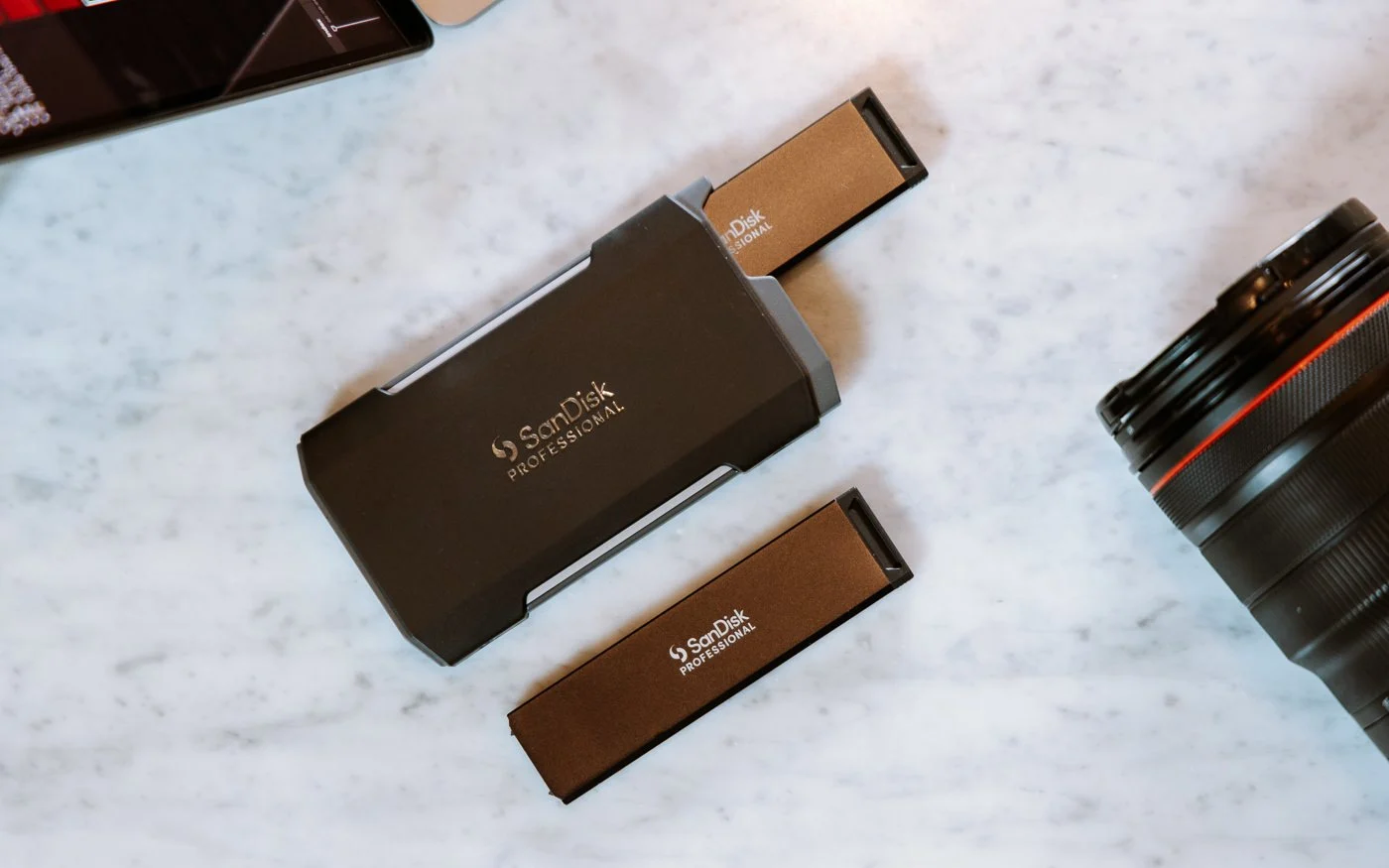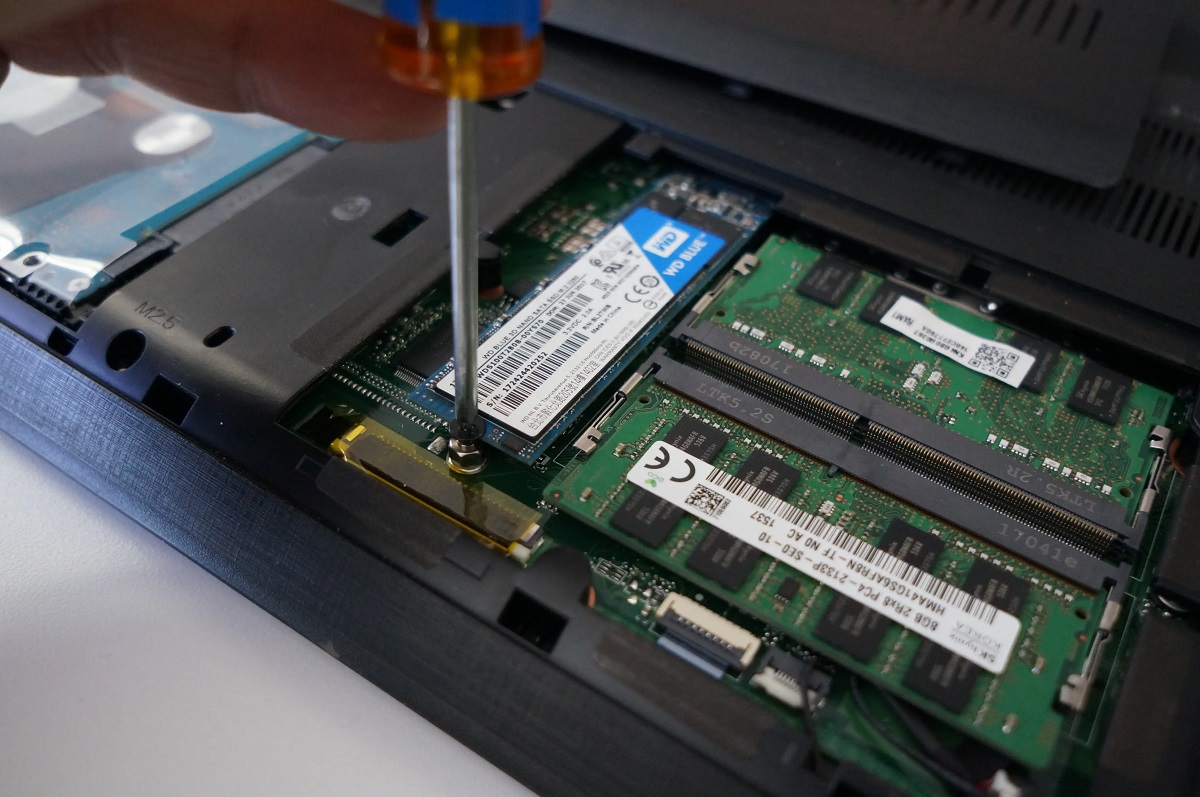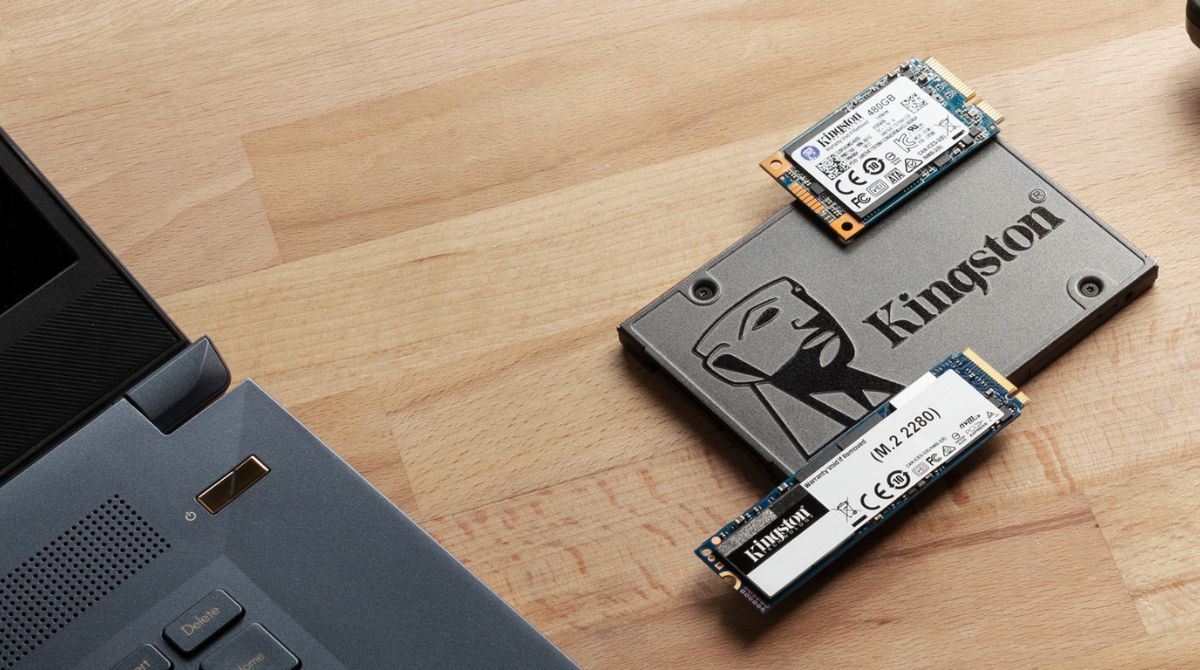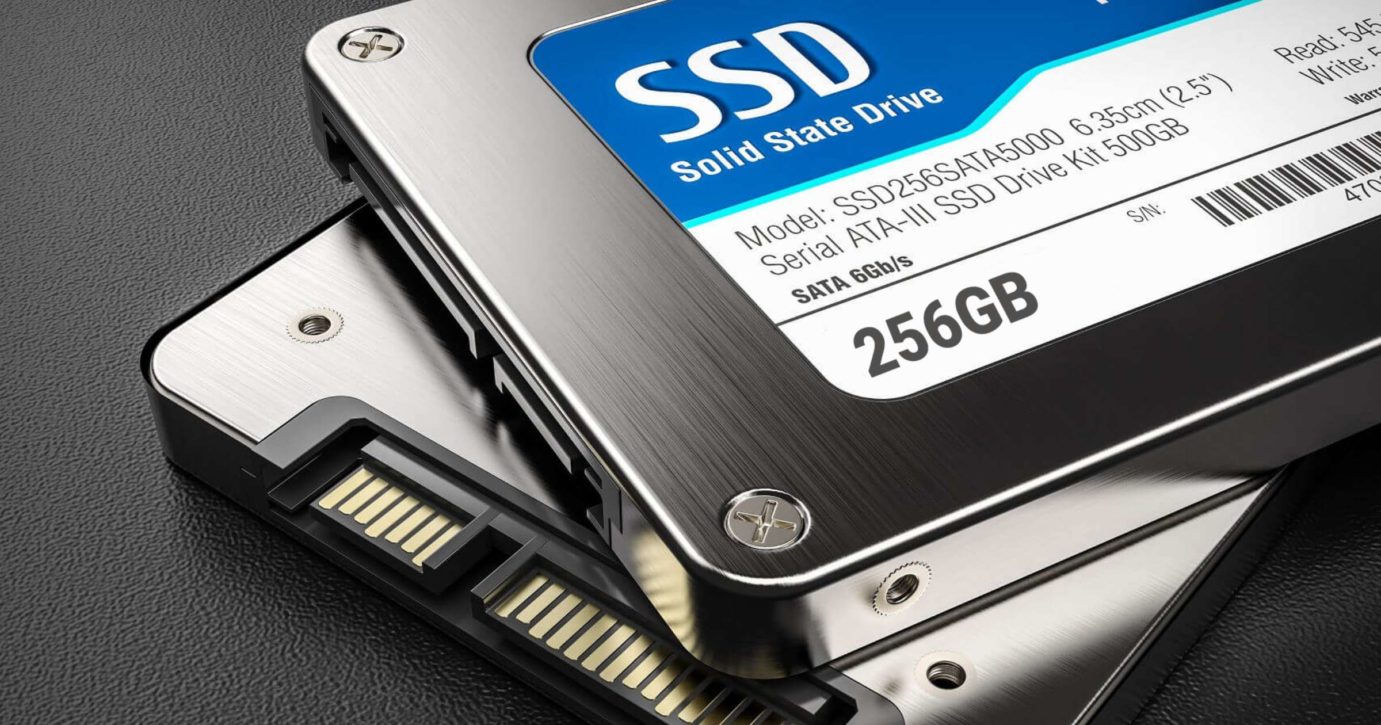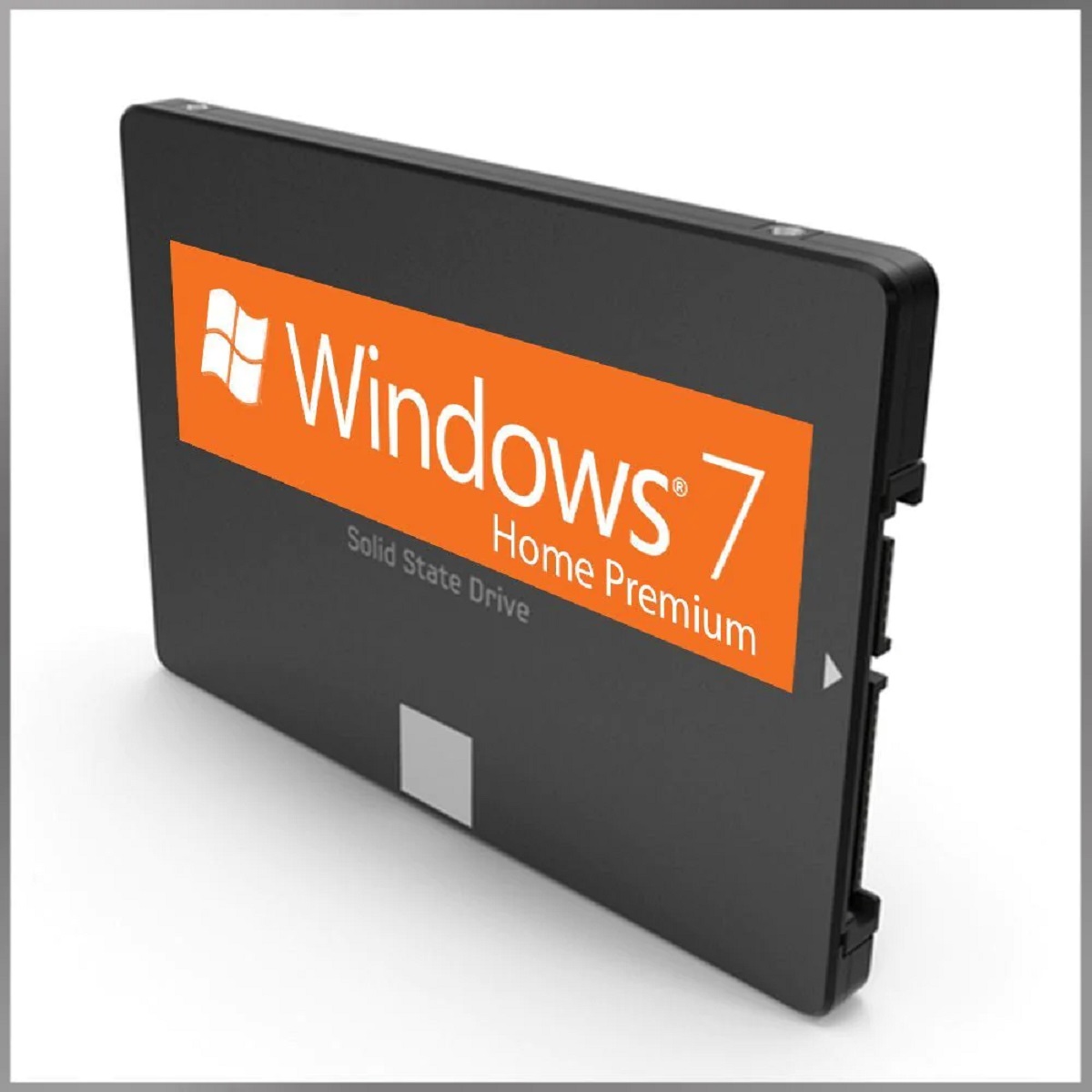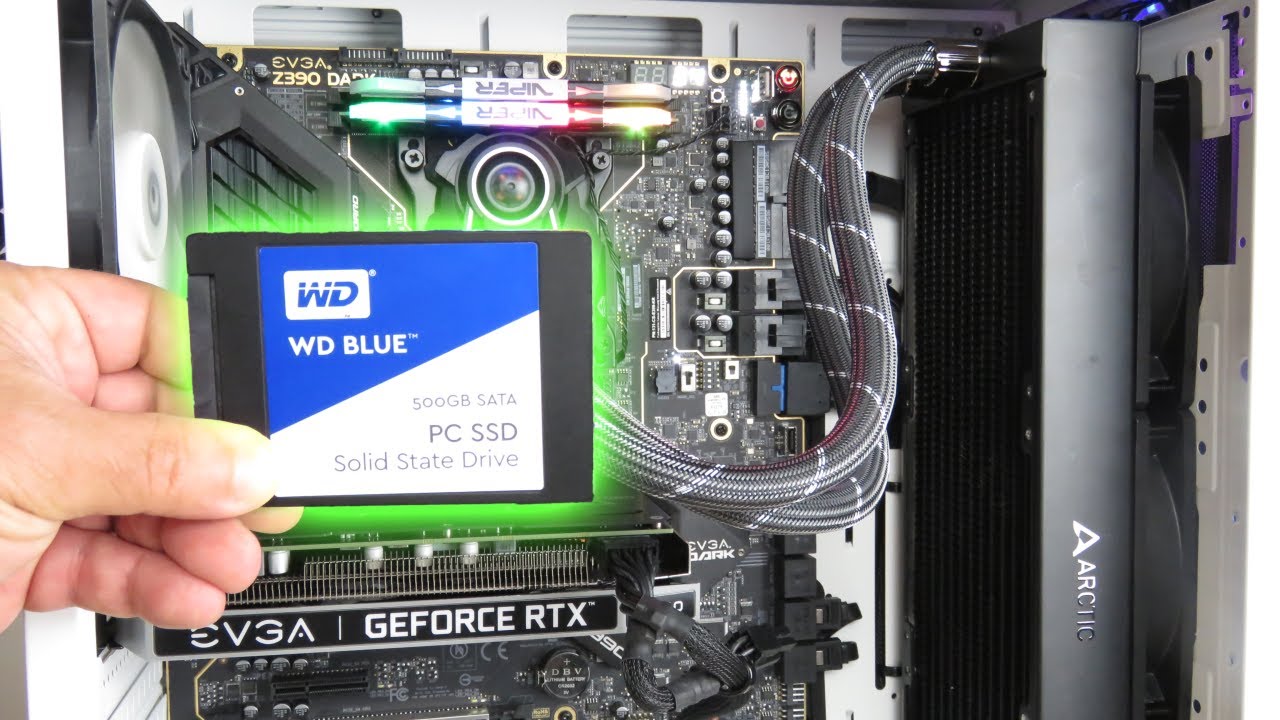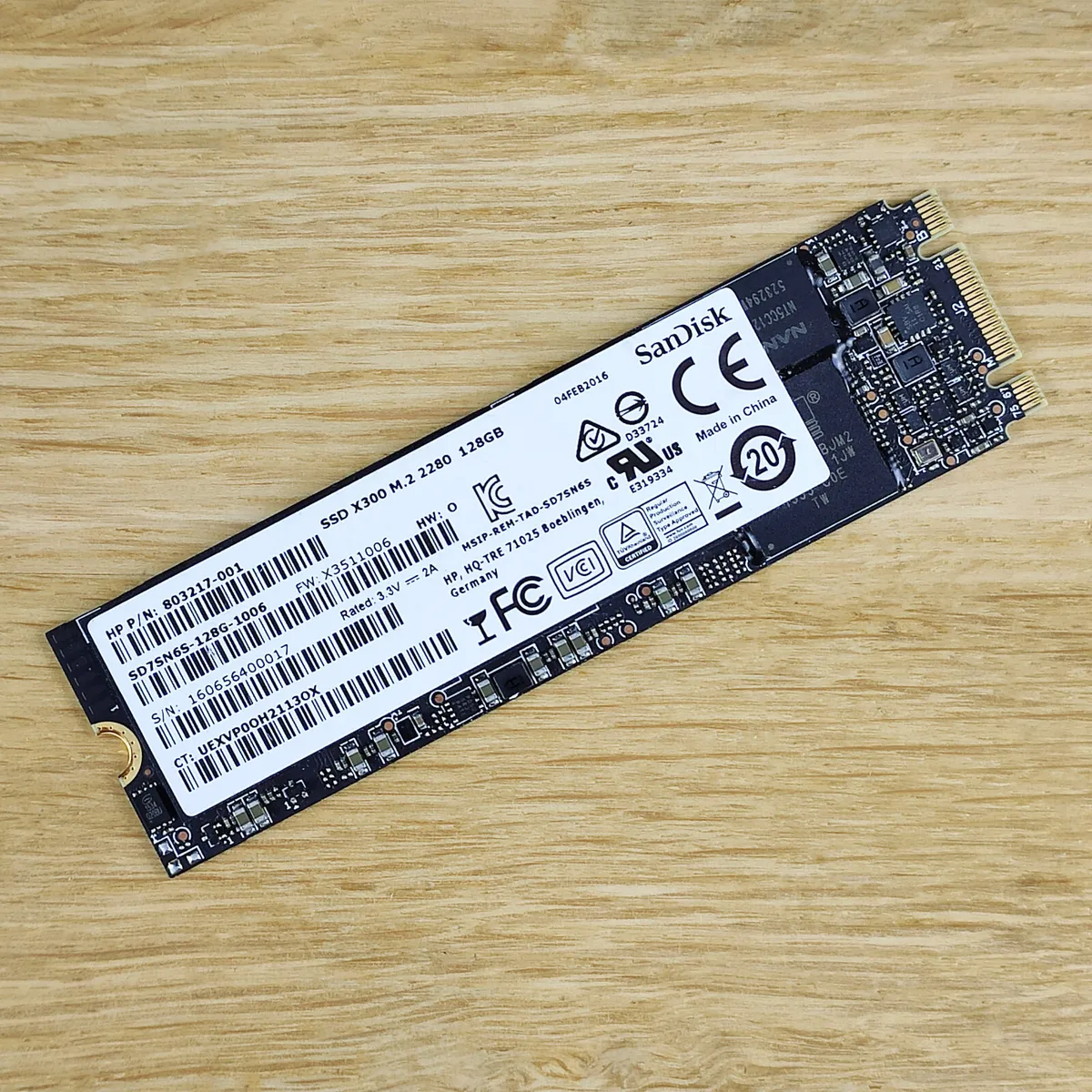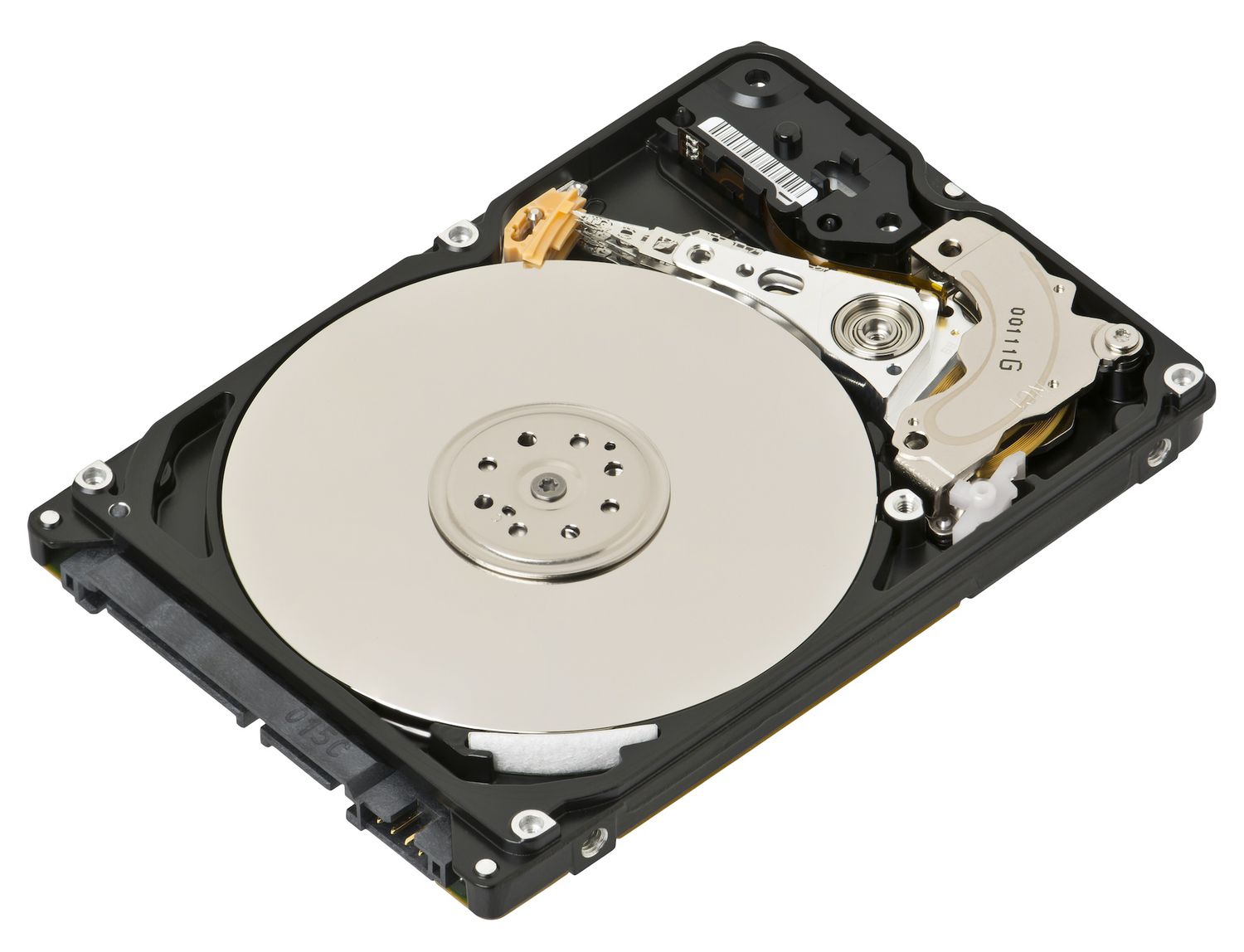Factors to Consider When Choosing an SSD for Video Editing
Video editing is a resource-intensive task that often requires quick and efficient storage solutions to handle large file sizes and complex editing processes. One crucial component to consider when setting up your video editing workstation is the solid-state drive (SSD) you choose. Here are some essential factors to consider when selecting an SSD for video editing:
1. Storage Capacity: The capacity of the SSD is an important consideration when it comes to video editing. High-resolution videos and raw footage can quickly consume your storage space. Ensure that the SSD you choose has ample capacity to store all your work files comfortably. Look for drives with capacities of 1TB or more, depending on your needs.
2. Read and Write Speeds: The speed at which data can be read from and written to the SSD plays a crucial role in video editing performance. Faster read and write speeds allow for smoother playback, quicker rendering, and faster file transfers. Look for SSDs with high sequential read and write speeds, preferably above 500MB/s for optimal performance.
3. Interface: The interface of the SSD determines its compatibility and transfer speeds. Common interfaces for SSDs include SATA, M.2, and NVMe. For the best performance, consider NVMe drives, which offer faster transfer rates and reduced latency compared to SATA-based SSDs.
4. Durability and Reliability: Since video editing involves extensive usage and heavy workloads, it is essential to choose an SSD that is reliable and durable. Look for SSDs with a higher endurance rating and technologies like error-correcting code (ECC) and wear-leveling that improve the drive’s lifespan and data integrity.
5. Cache: SSDs with a larger cache size can provide better performance when handling large video files. The cache acts as a temporary storage buffer, holding frequently accessed data for quicker access. Look for SSDs with a larger cache size, ideally 16MB or higher.
6. Power Efficiency: Video editing can be a power-intensive task, and an SSD that is power-efficient can help in reducing energy consumption and improving battery life if you’re using a laptop. Look for SSDs that have low power consumption during both active and idle states.
Consider these factors when choosing an SSD for video editing to ensure a smooth and efficient editing workflow. Finding the right SSD can significantly improve rendering times, reduce file transfer delays, and enhance the overall performance of your video editing system.
SSD Capacity for Video Editing
When it comes to video editing, having sufficient storage capacity is essential for handling large video files and the extensive data generated during the editing process. The capacity of the solid-state drive (SSD) you choose will directly impact your ability to store and manage your video editing projects effectively. Here are some key considerations for SSD capacity when it comes to video editing:
1. File Size: Video files can be quite large, especially if you’re working with high-resolution formats or capturing footage in RAW. It’s important to estimate the average file size of your projects and ensure that you have enough storage space to accommodate both the individual video files and all the associated project files.
2. Future Growth: As your video editing skills improve and you take on more complex projects, your storage needs are likely to increase. It’s wise to choose an SSD with a larger capacity that can handle your current needs and provide room for future growth. This way, you won’t have to worry about running out of storage space and can focus on your creative work.
3. Backup and Archiving: It’s essential to have a reliable backup and archiving system in place for your video editing projects. This often involves creating multiple copies of your footage and project files. Having an SSD with sufficient capacity allows you to store backups and archived projects without having to delete existing files or compromise on the quality of your work.
4. Working vs. Archive Storage: When choosing the capacity of your SSD, it’s important to differentiate between working storage and archive storage. Working storage refers to the space required for the active projects you’re currently working on, while archive storage is for completed projects that can be removed from active editing but may need to be accessed in the future. Consider allocating a separate storage drive or partition for archive storage to keep your working storage space optimized and clutter-free.
5. Consideration for Proxy Files: Proxy editing is a common technique used in video editing, which involves creating lower-resolution versions of the original video files for smoother editing. If you plan on using proxy editing in your workflow, it’s important to factor in the additional storage space required for proxy files. Ensure that your SSD has enough capacity to store both the original high-resolution files and the proxy files simultaneously.
Ultimately, the capacity of the SSD you choose for video editing will depend on your specific needs, budget, and the size of your video projects. It’s always better to err on the side of having more storage space to avoid running into storage limitations during your editing process. By considering the factors mentioned above, you can ensure that you have ample capacity to store and manage your video editing projects efficiently.
How Fast of an SSD Do You Need for Video Editing
When it comes to video editing, the speed of your storage solution plays a crucial role in the overall performance and efficiency of your workflow. A fast and responsive solid-state drive (SSD) can significantly improve the speed at which you can access, edit, and transfer video files. Here are some factors to consider when determining how fast of an SSD you need for video editing:
1. Read and Write Speeds: The read and write speeds of an SSD directly impact the time it takes to load and save your video files. Faster read speeds allow for quicker access to your footage, while faster write speeds enable faster rendering and exporting of your edited videos. Look for SSDs with high sequential read and write speeds, preferably above 500MB/s, for optimal performance.
2. Streaming and Playback: If you frequently work with high-resolution video formats or multiple video streams simultaneously, a fast SSD becomes even more critical. A slow storage solution may result in dropped frames and choppy playback, hindering your ability to accurately assess the quality of your edits. Look for SSDs that can sustain high data transfer rates for smooth streaming and playback.
3. Rendering and Exporting: The time it takes to render and export your edited videos depends on the speed of your storage solution. A fast SSD can significantly reduce the time it takes to process and save your projects, allowing you to be more productive and efficient. Look for SSDs with high write speeds to expedite the rendering and exporting process.
4. Working with RAW Footage: If you often work with RAW video files, which tend to be larger in size and require more processing power, a fast SSD is essential. RAW editing demands a storage solution with high read and write speeds to handle the immense data throughput effectively. Look for SSDs specifically designed for professional video editing or with specifications that cater to the demands of RAW editing.
5. Interface: The interface of the SSD can also affect its speed. SATA-based SSDs, while still faster than traditional hard drives, may not offer the same level of speed as newer interfaces like NVMe. NVMe SSDs use the PCIe interface, which provides faster data transfer rates and lower latency. If speed is a top priority, consider opting for an NVMe SSD for your video editing needs.
Ultimately, the speed of the SSD you need for video editing depends on the complexity and size of your video projects. If you primarily work with standard-definition videos and have minimal multitasking requirements, a mid-range SSD with decent read and write speeds should suffice. However, if you work with high-resolution videos, utilize RAW footage, or demand faster rendering times, investing in a high-speed SSD with superior specifications is recommended.
Consider your specific video editing needs and budget when choosing the speed of the SSD. A faster SSD will undoubtedly enhance your editing experience by reducing loading times, improving overall system responsiveness, and maximizing your productivity.
SSD Interfaces for Video Editing
When selecting a solid-state drive (SSD) for video editing, it’s crucial to consider the interface of the SSD. The interface determines the compatibility, speed, and overall performance of the SSD in your video editing workflow. Here are the most common SSD interfaces for video editing:
1. SATA: SATA (Serial Advanced Technology Attachment) is the most widely used interface for traditional hard drives and SSDs. SATA SSDs offer decent performance, making them suitable for general video editing tasks. However, SATA interfaces have limitations when it comes to data transfer speeds, with typical read and write speeds ranging from 500MB/s to 600MB/s. If you’re working with high-resolution video formats or require faster transfer rates, consider other interface options.
2. M.2: M.2 is a small form factor interface that is commonly used for SSDs in laptops and compact desktop systems. M.2 SSDs can be connected directly to the motherboard, offering faster speeds compared to traditional SATA SSDs. The speeds of M.2 SSDs can vary depending on the generation and the PCIe lanes supported by the motherboard. Look for M.2 SSDs with NVMe (Non-Volatile Memory Express) support for the best performance in video editing applications.
3. NVMe: NVMe is a high-performance interface that utilizes the PCIe (Peripheral Component Interconnect Express) connection for SSDs. NVMe SSDs offer significantly faster data transfer speeds compared to SATA or M.2 SSDs, enabling quicker access to video files and faster rendering times. NVMe SSDs can achieve read and write speeds exceeding 3000MB/s, providing a noticeable boost in performance for video editing tasks. However, it’s important to ensure that your motherboard supports NVMe technology before investing in an NVMe SSD.
4. Thunderbolt: Thunderbolt is a high-speed interface technology developed by Intel and commonly found in Mac systems. It offers significantly faster data transfer rates compared to other interfaces, making it ideal for professional video editing workflows. Thunderbolt SSDs can provide lightning-fast read and write speeds, allowing for quick file transfers and smoother playback of high-resolution videos. If you’re working with Thunderbolt-compatible devices and require maximum speed and performance, consider Thunderbolt SSDs for your video editing needs.
When choosing an SSD interface for video editing, consider your specific requirements, system compatibility, and budget. If you’re working on a budget or your video editing needs are relatively basic, SATA or M.2 SSDs can provide adequate performance. However, if speed and performance are critical, especially for handling large video files or demanding professional video editing tasks, NVMe or Thunderbolt interfaces are recommended for their superior data transfer rates.
It’s important to ensure that your system’s hardware is compatible with the chosen SSD interface. Check the motherboard specifications and available expansion slots to ensure compatibility before making a purchase. By selecting the right SSD interface for video editing, you can ensure optimal performance and seamless integration with your existing system, ultimately enhancing your video editing experience.
Additional Features to Look for in an SSD for Video Editing
When choosing a solid-state drive (SSD) for video editing, there are additional features and considerations beyond capacity and speed that can enhance your editing workflow and provide added convenience. Here are some important features to look for in an SSD for video editing:
1. TRIM Support: TRIM is a feature that helps maintain the long-term performance and lifespan of an SSD. It allows the operating system to communicate with the SSD, informing it which data blocks are no longer in use and can be cleared. SSDs with TRIM support can benefit from improved performance and longevity, making it an essential feature to look for, especially for frequent video editing tasks.
2. Data Protection: Data protection features are crucial to safeguard your important video editing projects. Look for SSDs that offer features like power loss protection, which ensures that data is not lost or corrupted in the event of a power outage. Sudden power loss can be detrimental to your work, so having robust data protection mechanisms in place can provide peace of mind.
3. Hardware Encryption: Hardware encryption is a valuable security feature that protects your sensitive video files and project data from unauthorized access. Look for SSDs that support hardware encryption standards like AES (Advanced Encryption Standard) to keep your work secure, especially if you handle confidential or client-related footage.
4. Reliability and Endurance: The reliability and endurance of an SSD are crucial considerations, especially for video editing, where heavy workloads and extensive usage are common. Look for SSDs that have a high endurance rating, measured in terabytes written (TBW), to ensure that your drive can withstand prolonged and intensive video editing sessions without compromising performance or lifespan.
5. Noise and Heat Generation: SSDs are known for their quiet and cool operation compared to traditional hard drives. However, it’s still worth considering the noise and heat generation of the SSD you choose, particularly if you’re working in a small or confined space. Look for SSDs with efficient cooling mechanisms and low noise levels to ensure a comfortable and quiet working environment.
6. Compatibility: Ensure that the SSD you choose is compatible with your system, both in terms of physical size and the required interface. Pay attention to the form factor (2.5-inch, M.2, etc.) and the interface (SATA, NVMe, Thunderbolt, etc.) supported by your computer. Choosing an SSD that is compatible with your system will ensure a seamless installation and optimal performance.
Remember, while these additional features can enhance your video editing experience, they may come at a higher cost. Consider your specific needs, budget, and the importance of these features in your workflow before making a final decision.
By considering these additional features when selecting an SSD for video editing, you can improve reliability, security, and performance, ultimately optimizing your video editing workflow and ensuring the smooth and efficient processing of your video projects.
SSD Brands and Models Recommended for Video Editing
When it comes to choosing an SSD for video editing, there are several reputable brands and models known for their reliability, performance, and compatibility with video editing software. Here are some recommended SSD brands and models that are well-suited for video editing:
1. Samsung 970 EVO Plus: The Samsung 970 EVO Plus is a popular choice among video editors for its exceptional performance and reliability. It utilizes NVMe technology, providing lightning-fast read and write speeds, making it ideal for handling large video files and accelerating the editing process. The 970 EVO Plus is available in various capacities, ranging from 250GB to 2TB, catering to different storage needs.
2. Crucial MX500: The Crucial MX500 is another highly regarded SSD brand for video editing. It offers a balance between performance, affordability, and reliability. The MX500 features SATA III interface, enabling fast data transfer rates and smooth playback of high-resolution videos. It is available in various capacities, up to 2TB, providing ample storage space for your video editing projects.
3. Western Digital Black SN750: The Western Digital Black SN750 is a high-performance NVMe SSD designed for gaming and creative professionals, including video editors. It boasts impressive read and write speeds, ensuring quick access to video files and accelerated rendering times. The SN750 comes in capacities ranging from 250GB to 2TB, with the option of adding a heatsink to improve thermal performance and maintain consistent speed.
4. SanDisk Extreme Pro: The SanDisk Extreme Pro SSD is known for its durability and reliability, making it a suitable choice for video editing professionals. It offers fast read and write speeds, allowing for smooth video playback and responsiveness during the editing process. The Extreme Pro is available in capacities up to 2TB, providing ample storage for your video editing projects.
5. ADATA XPG SX8200 Pro: The ADATA XPG SX8200 Pro is a high-performance NVMe SSD that offers excellent speed and reliability. It boasts impressive sequential read and write speeds, making it a great choice for handling large video files and demanding video editing tasks. The SX8200 Pro offers capacities up to 2TB, ensuring you have sufficient storage space for your video editing projects.
Other notable SSD brands and models worth mentioning for video editing include Intel SSD 660p, Kingston KC2000, and Corsair Force Series MP600. Each brand and model mentioned here offers a balance of performance, reliability, and storage capacity, making them reliable choices for video editing.
Consider your specific requirements, budget, and the compatibility with your system when choosing an SSD brand and model for video editing. It’s also a good idea to read reviews and compare the specifications and features offered by different brands and models to find the one that best suits your needs.
Keep in mind that SSD technology is constantly evolving, so it’s essential to stay updated with the latest releases and advancements in the market to make an informed decision. By choosing a reputable brand and model, you can ensure a reliable and efficient SSD for your video editing workflow.
Tips for Optimizing SSD Performance in Video Editing
Once you have selected a solid-state drive (SSD) for video editing, maximizing its performance is crucial to ensure smooth and efficient workflow. Here are some tips to optimize SSD performance specifically for video editing:
1. Enable TRIM: TRIM is a feature that improves the long-term performance of an SSD by clearing deleted data blocks. It is important to enable TRIM on your SSD to maintain its efficiency and prevent performance degradation over time. Check your operating system settings to ensure that TRIM is enabled for your SSD.
2. Keep Adequate Free Space: SSD performance can be impacted when it nears maximum capacity. Aim to keep at least 20% of your SSD’s total capacity free to ensure optimal performance. This allows the drive to utilize free space for garbage collection and wear-leveling algorithms, which contribute to better overall performance.
3. Use Proper File Management: Organizing your video files and project data can help optimize SSD performance. Keeping your files organized into separate folders or directories can improve read and write speeds, as the drive can access data more efficiently. Regularly declutter and delete unnecessary project files to free up space and keep your SSD running smoothly.
4. Disable Indexing: Indexing, a feature that speeds up file searches, can put a strain on your SSD’s performance. In video editing, where large file sizes are common, disabling indexing on your SSD can improve overall performance. To disable indexing, navigate to the drive’s properties in your operating system and uncheck the “Allow files on this drive to have contents indexed” option.
5. Use High-Quality Data Cables: When connecting your SSD to your system, use high-quality data cables to ensure stable and reliable performance. Poor-quality or damaged cables can result in data corruption or slower transfer speeds. Consider using cables that meet the specifications and standards set by your SSD manufacturer for optimal performance.
6. Regularly Update Firmware: SSD manufacturers often release firmware updates that address performance issues and enhance reliability. Checking for firmware updates regularly and applying them to your SSD can help improve performance and resolve any compatibility or performance-related issues.
7. Proper Cooling: SSDs can generate heat during intensive video editing processes. Maintaining proper cooling for your system, particularly the SSD, can ensure sustained performance. Ensure that your computer’s cooling system is working effectively, and consider additional cooling options such as fans or heat sinks if required.
8. Backup and Data Redundancy: Regularly backing up your video editing projects is essential for data security and preventing data loss. Utilize external storage solutions or cloud backups to ensure redundancy. In the event of an SSD failure or data corruption, having a backup ensures that your work is protected and easily recoverable.
By implementing these tips, you can optimize the performance of your SSD for video editing tasks. Improving SSD performance not only enhances your editing workflow but also ensures the longevity and reliability of your storage solution.
Cost Considerations for SSDs in Video Editing
When it comes to choosing a solid-state drive (SSD) for video editing, cost is an important factor to consider. SSDs come in a range of prices, and it’s essential to find a balance between affordability and performance. Here are some cost considerations to keep in mind when selecting an SSD for video editing:
1. Capacity: The capacity of the SSD directly influences its cost. Higher-capacity SSDs generally come with a higher price tag. Consider your video editing needs and the size of your projects to determine the required storage capacity. It’s important to choose an SSD with sufficient capacity to accommodate your current and future storage needs without overspending on excessive storage.
2. Performance: SSDs with higher performance capabilities, such as faster read and write speeds, typically come at a higher cost. Assess your video editing requirements and determine the level of performance necessary for your projects. If you primarily work with standard-definition videos or have basic editing needs, a mid-range SSD with decent performance may be sufficient. However, if you handle large files or require faster rendering times, investing in a higher-performance SSD may be worth the cost.
3. Interface: The interface of the SSD can also impact its cost. In general, newer and faster interfaces, such as NVMe or Thunderbolt, tend to come at a higher price compared to SATA or M.2 SSDs. Consider the interface options available and balance the performance benefits against your budget. If speed is crucial and you have the budget to accommodate it, opting for a higher-cost interface may be beneficial for your video editing tasks.
4. Brand and Model: Different brands and models of SSDs come with varying price points. Established brands with a reputation for reliability and performance may have a higher cost. However, it’s important to carefully evaluate the specifications and features offered by different brands and models. Sometimes, lesser-known brands or newer models offer comparable performance at a more affordable cost. Research and read reviews to find a balance between cost and quality.
5. Budget Considerations: Set a budget for your SSD purchase based on your financial circumstances and priorities. Determine how much you are willing to invest in your video editing storage solution. While it’s tempting to go for the highest-performing SSD available, it’s important to consider the cost-benefit ratio and identify the SSD that offers the best value within your budget constraints.
6. Warranty and Support: Consider the warranty and customer support provided by the SSD manufacturer. A longer warranty period and reliable customer support can provide peace of mind and potential cost savings in the long run. It’s worth paying a slightly higher cost for an SSD with better warranty coverage and support if it ensures a more secure investment and potential assistance in case of issues or failures.
When considering the cost of an SSD for video editing, it’s vital to strike a balance between performance, capacity, and budget. Assess your specific video editing needs, weigh the advantages and disadvantages of various options, and choose an SSD that offers the best combination of features, performance, and cost within your means.
Remember, the cost of the SSD is a significant factor, but it should not be the sole determinant. The performance, reliability, and efficiency of the SSD should also be considered to ensure a smooth and efficient video editing experience.
Conclusion
Choosing the right solid-state drive (SSD) for video editing is a crucial decision that can significantly impact your editing workflow and overall productivity. By considering factors such as capacity, speed, interface, additional features, and cost, you can make an informed decision and select an SSD that meets your specific video editing needs.
When it comes to capacity, ensure that the SSD has sufficient storage space to accommodate your video files and project data. High-resolution videos and RAW footage can quickly consume storage, so choosing an SSD with ample capacity is essential.
The speed of the SSD is critical for video editing tasks. SSDs with faster read and write speeds allow for smoother playback, quicker rendering, and faster file transfers. Depending on your requirements, consider NVMe SSDs for optimal performance.
The interface of the SSD determines its compatibility and transfer speeds. SATA, M.2, and NVMe are common interfaces. NVMe provides faster transfer rates, while SATA and M.2 options are more affordable but slightly slower. Choose the interface that best suits your needs and budget.
In addition to capacity and speed, consider additional features like TRIM support, data protection mechanisms, hardware encryption, reliability, and endurance. These features can improve performance, data security, and longevity of the SSD.
Cost is an important consideration when selecting an SSD. Determine your budget and prioritize between performance, capacity, and brand reputation. Look for deals and discounts, but also consider the long-term value and warranty coverage provided by the manufacturer.
When it comes to brands and models, trusted names like Samsung, Crucial, Western Digital, SanDisk, and ADATA offer a range of SSDs suitable for video editing. Research their specifications, read reviews, and consider the specific needs of your video editing projects before making a decision.
By following these guidelines, you can choose an SSD that enhances your video editing workflow, offers reliable storage, and delivers the speed and performance required for smooth editing and rendering. A well-selected SSD can significantly improve your efficiency and productivity as a video editor, making your editing experience more enjoyable and seamless.
Investing time and effort in selecting the right SSD for video editing is a worthwhile endeavor. It ensures that your storage solution matches the demands of your projects, optimizing your editing experience and enabling you to produce high-quality videos efficiently.







